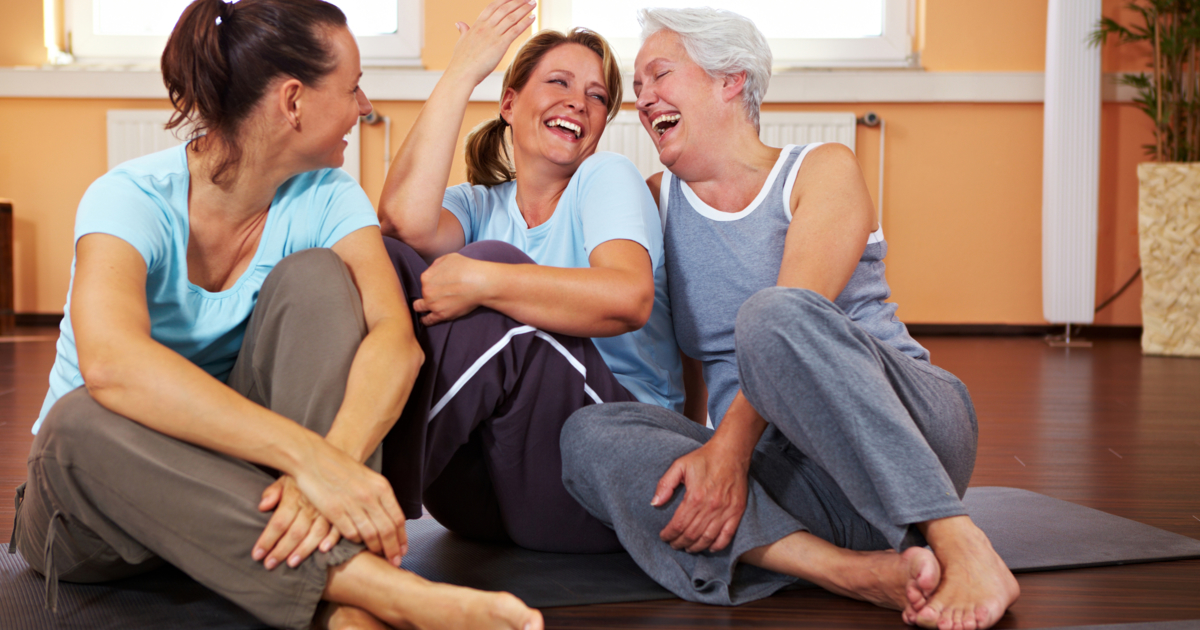Have you ever laughed yourself silly? If you did, what you may not know is that while you laughed, you activated dozens of muscles throughout your body. Laughter is both a mind and body experience. As such, laughing can prove beneficial for the fibromyalgia body in more ways than you may have considered.
Of course, these benefits aren’t only for those of us who deal with fibromyalgia and chronic illness symptoms. Everyone benefits, which is one good reason for laughter being so contagious.
Speaking of infectious laughter, have you noticed the outrageous popularity of pet videos? Entertainingly funny dogs and cats are the most searched for subject topics online. Cat videos (in particular) are forwarded and shared in social media posts almost more than any other form of humor.
Sharing comedy with others isn’t anything new. From medieval court jesters, to early slapstick films and up to current TV sitcoms, society has laughed both with and at the antics of others. If you’re old enough, you may remember the pratfall that received weekly laughs on the Dick Van Dyke Show. Even though we knew it was coming, each time Dick cartwheeled over his ottoman, someone in my family giggled. It was usually my dad and the laughter spread to everyone else in the room.
Next Page
Why Do We Laugh?
I’ll share several beneficial reasons for laughter shortly. But here’s a bit of background first. Have you ever wondered why we laugh in the first place? You may not think about it, but laughter is actually an important form of communication.
We may laugh for a variety of reasons including when we’re happy, nervous, overtired, or trying to fit in with others. Laughing can help us to feel connected, secure, and relaxed.
If you’re the one doing the talking, laughter can help to put people at ease, to show confidence, and to lighten the mood. If you’re the listener, laughing can show that you’re engaged, grasp the topic at hand, and that you’re part of the social group.
To learn more specifics about the physical act of laughing – including breathing patterns – watch this fun TED talk on WHY we laugh.
How We Laugh
Do you produce rhythmic, vocalized, expiratory, and involuntary actions? That’s a complicated way to explain what happens when we laugh. There are various sounds, a rush of breath, and sometimes other body motions that may occur. These include waving arms, bending over at the waist, or placing hands to the face. It all depends to what degree you find your funny bone tickled.

Not everyone laughs at the same things.
Children seem to find more reasons for infectious laughter than adults. Apparently we become more discerning as we age. Adults laugh, on average, about 15 times per day as opposed to about 400 times per day for children.
Laughing uses approximately 15 facial muscles as well as muscles in the intercostal ribcage and the diaphragm. In fact (if you do it right), a robust bout of laughter can be a whole body experience. Laughing vigorously can provide the equivalent physical benefits of about 10 minutes of a rowing exercise or 15 minutes of an exercise bicycle.
Decisions, decisions ….
I know which one I’d choose!
Next Page
Benefits for Fibromyalgia
While I did mention that hearty laughter is a universal benefit to mankind, it can be particularly beneficial for the fibromyalgia community. Chronic illness negatively affects mood, the immune system, cognitive function, hormonal regulation, muscle tension, and the ability to manage stress.
What a blessing it is to discover that laughter has proven benefits in all of these areas and more.
I’ve gathered the Top 10 Benefits of Laughter for Fibromyalgia and list them below. They’re arranged in no particular order.
- Strengthens social connections
- Boosts the immune system
- Inhibits the stress response (fight, flight, or freeze)
- Improves circulation
- Stimulates positive brain function
- Eases muscle tension
- Lowers blood pressure
- Provides an emotional release and reduces negativity
- Enhances “living in the moment”
- Can be a whole body workout!
Next Page
Laughing Is Personal
Now that you know the benefits, what will you do to encourage laughter in your home? Discovering what you happen to find funny is worth the time investment. It’s easy to overlook the fact that we have to look for humor in daily life in order to see it.
Do you like or loathe puns? It seems that people are firmly entrenched in one camp or the other. Do you like slapstick, comedy spiels, silly songs, or complicated wordplay? Whatever it is, seek out more.
Here are a few more suggestions to invite more laughter into your life.
- Enroll in “joke of the day” emails.
- Watch favorite sitcoms, movies, or DVDs.
- Watch online videos.
- Hang out with others who laugh.
- Smile at your own reflection in the mirror as you pass by.
- Hang out with children and laugh when they do.
- Craft your sense of humor and look for things that make you grin.
- Read funny books, cartoons, and blogs.
- Reflect on family scrapbooks, photo albums, or home movies.
- Watch comedians live, on TV, or on video.
- Entertain friends with fun foods and games.
- Relax, have fun, and play with your pets.
- Try laughter yoga or laughter meditations.
- Call up a friend and share funny memories.
What are your favorite funny activities?
flung into a kaleidoscope of new possibilities.”
Jean Houston


